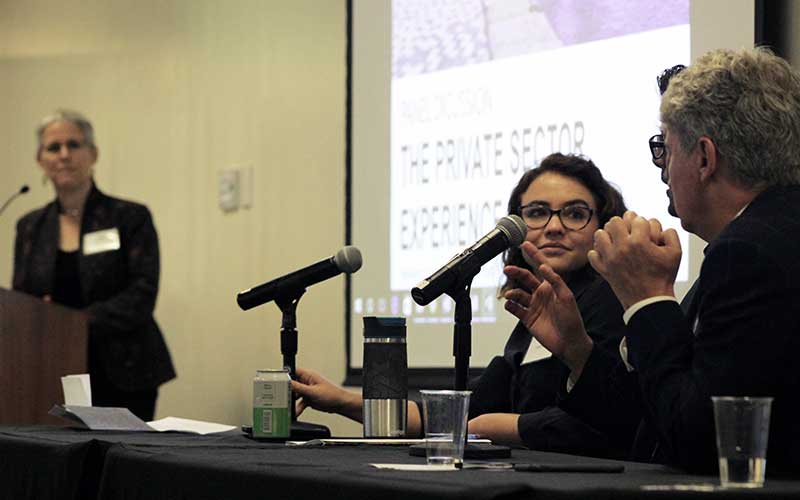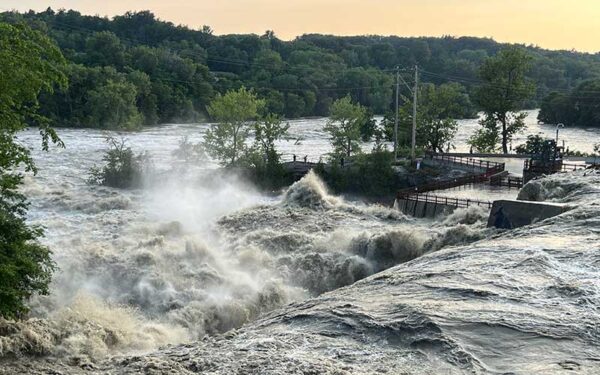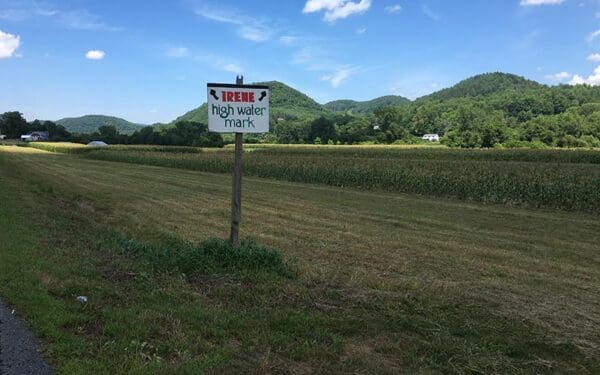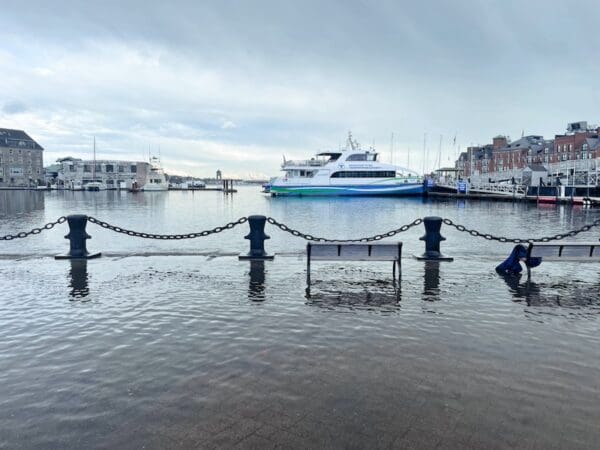
The Climate Change and Waterfront Development forum brought together diverse stakeholders to discuss public and private sector approaches to resiliency and public access along Boston's waterfront. Photo: Boston Harbor Now
In the face of climate change and rapid development along the Boston waterfront, the importance of protecting the public right to access and use the waterfront has become increasingly apparent.
In February, CLF released a report titled Climate Change and the Massachusetts Public Waterfront Act. Its goal: to start a conversation about regulatory updates and other proactive measures that would not only allow for but encourage climate resiliency measures that benefit the public.
Last month, CLF followed up the report with a forum co-hosted with Boston Harbor Now. The event brought together diverse stakeholders – city and state leaders, advocacy organizations, the development community, and others – to discuss strategies for moving forward.
The report and the forum come at a critical time. We are already seeing flooding in the streets of Boston’s newest neighborhood, the Seaport District, during major storms. With sea levels rising and rain- and snowstorms predicted to become more frequent and intense, we must plan now for the climate change impacts we know are coming.
Current Law Allows for Resilience Measures, but Regulations Need Updating to Account for Our Changing Climate
The Public Waterfront Act is a state law that regulates activities on tidelands. It protects the rights of the public on those lands and guarantees that private uses of tidelands and waterways serve a proper public purpose. Because it was written decades ago, the current tidelands regulatory framework makes few explicit references to climate impacts. In some cases, it relies on maps or data that are becoming increasingly obsolete in our new climate reality.
Some even believe the tidelands regulations pose significant barriers to climate adaptation responses by, for example, categorically prohibiting fill for such purposes. In bringing together state, city, community, and business leaders in last month’s forum, our goal was to develop a shared understanding of the opportunities to address climate change impacts under the Public Waterfront Act – and discuss next steps for ensuring we have the tools we need to make our neighborhoods secure. Here are the key takeaways from the day:
- The Public Waterfront Act does not pose a barrier to adaption measures. However, the regulations could be updated and clarified to better facilitate climate adaptation measures. Specifically, new, innovative projects that promote climate resiliency sometimes take longer to permit because they are not contemplated under the current, outdated regulatory framework. In other words, because the regulations do not currently account for climate resilience measures, they may unintentionally, if not explicitly, create barriers for developers.
- Pilot projects can be used to demonstrate how climate resilience can be achieved effectively. These projects may encourage more good projects by showing that it is possible.
- The Public Waterfront Act is just one piece of a larger puzzle that developers must navigate to move projects forward. Enhanced coordination with other regulatory programs, like those for wetland protection, will be needed to achieve climate resiliency.
- Continued engagement will be necessary across communities, organizations, developers, and other stakeholders affected by climate change and its impacts on public access to and use of the waterfront. While changes to the regulations can improve future projects, there are still vulnerable existing projects that do not anticipate the impacts of climate change. These projects will need to find ways to continue delivering on their obligations to provide public access and benefit in the face of increased flooding and other climate impacts.
What’s Next: Keeping the Conversation Moving Forward
Coming out of the forum, we have some concrete steps for moving the conversation forward, including:
- The Massachusetts Department of Environmental Protection has indicated its intent to convene a working group to look at possible updates to current tidelands regulations. CLF will be following this process closely to ensure that public rights and benefits are at the forefront of the dialogue.
- CLF will continue conducting outreach to and engagement with our partners in communities and neighborhoods affected by climate change and its impacts on public access to and use of the waterfront.
- CLF will work to ensure that the development and real estate communities are active participants in this ongoing conversation. Together, we can ensure that new projects enhance climate resilience in ways that benefit the public and not just private developments.
Climate impacts are here now, and we cannot afford to wait any longer to protect our vulnerable waterfronts. At the same time, we must protect our public right to access waterfront areas. By strengthening the Public Waterfront Act regulations, we can ensure the integrity of our waterfront and our rights.




